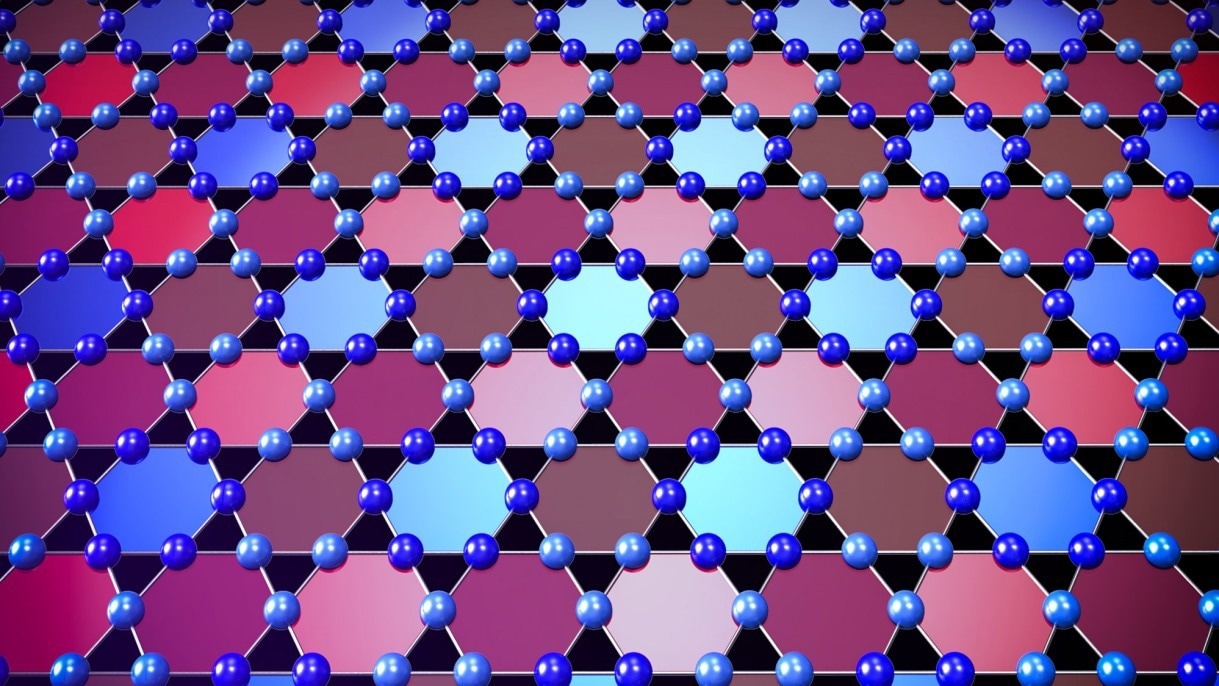Scholars in a Brown University laboratory, collaborating with an international group of researchers, have shifted a bit closer to cracking this puzzle for a family of superconducting Kagome metals.

Brown researchers, working with an international team of scientists, describe the microscopic structure of Kagome superconductor RbV3Sb5 in a new study. Image Credit: M. Zahid Hasan and Jia-Xin Yin, Princeton University. Courtesy of the National Science Foundation multimedia gallery.
Many technological leaps remain out of reach as long as superconductivity—the flow of electricity in the absence of resistance or energy waste—is yet to be understood completely.
As far as this technology is concerned, one of the significant limitations for real-world applications is that the materials that make superconducting possible normally need to be at extremely cold temperatures for that level of electrical efficiency to be reached.
To get near this limit, there is a need for researchers to build a clear picture of what various superconducting materials resemble at the atomic scale as they shift through various states of matter to turn into superconductors.
In a new study performed, a ground-breaking new strategy was used for integrating a quantum modeling theory and nuclear magnetic resonance imaging to explain the microscopic structure of Kagome metals at 103 °K, which is comparable to nearly 275 °F below 0 °F.
The scientists explained the properties of this weird state of matter for what is thought to be the first time in the journal Physical Review Research. The findings constitute a new accomplishment in a strong march toward superconductors that will function at higher temperatures.
Superconductors that have the potential to operate at room temperature (or nearby to it) are the holy grail of condensed-matter physics due to the enormous technological chances they would set in in power efficiencies, such as electricity transportation, transmission, as well as quantum computing.
If you are ever going to engineer something and make it commercial, you need to know how to control it. How do we describe it? How do we tweak it so that we get what we want? Well, the first step in that is you need to know what the states are microscopically. You need to start to build a complete picture of it.
Vesna Mitrović, Study Co-Author and Leader, Condensed Matter NMR group, Physics Professor, Brown University
The new study performed highlights superconductor RbV3Sb5, which is composed of the metals vanadium, rubidium, and antimony. The material has got its name due to its specific atomic structure, which matches a basketweave pattern featuring interconnected star-shaped triangles.
Kagome materials intrigue scientists due to the knowledge they offer about quantum phenomena. This helps to bridge two of the most basic fields of physics—condensed matter physics and topological quantum physics.
Earlier work performed by various groups demonstrated that this material experiences a cascade of different phase transitions when the temperature is lowered, thereby developing various states of matter with different exotic properties.
When this material is taken to 103 °K, the structure of the lattice changes and the material shows what is called a charge-density wave, where the electrical charge density goes up and down. Gaining knowledge about these jumps is significant for the development of theories that explain the behavior of electrons in quantum materials similar to superconductors.
What had not been witnessed before in this kind of Kagome metal was what the physical structure of this lattice and charge order is like at the temperature the scientists were looking at, which is known to be the highest temperature state where the metal begins transitioning between various states of matter.
The team was capable of explaining the new structure the lattice changes into and its charge-density wave. This could be done by making use of a new strategy integrating NMR measurements and a modeling theory called density functional theory that is utilized to simulate the electrical structure and position of atoms.
They displayed that the structure shifts from a 2×2×1 pattern with a signature Star of David pattern to a 2×2×2 pattern. This takes place since the Kagome lattice inverts in on itself when the temperature gets highly frigid.
The scientists displayed that the new lattice it shifts into is largely made up of separate triangles and hexagons. Also, they displayed how this pattern links when they take one plane of the RbV3Sb5 structure and rotate it, “gazing” into it from a different angle.
It’s as if this one Kagome now becomes these complicated things that split in two. It stretches the lattice so that the Kagome becomes this combination of hexagons and triangles in one plane and then in the next plane over, after you rotate it half a circle, it repeats itself.
Vesna Mitrović, Study Co-Author and Leader, Condensed Matter NMR group, Physics Professor, Brown University
According to scientists, probing this atomic structure is considered to be an essential step in order to offer a full portrait of the exotic states of matter this superconducting material gets shifted into.
We know what this is now and our next job is to figure out what is the relationship to other bizarre phases at low temperature — does it help, does it compete, can we control it, can we make it happen at higher temperatures, if it’s useful? Next, we keep lowering the temperature and learning more.
Vesna Mitrović, Study Co-Author and Leader, Condensed Matter NMR group, Physics Professor, Brown University
The experimental study was headed by Jonathan Frassineti, a joint graduate student between Brown and the University of Bologna, Giuseppe Allodi from the University of Parma, and two Brown students: Erick Garcia and Rong Cong.
Theoretical work was headed by Pietro Bonfà while all the materials were subjected to synthesis at the University of California Santa Barbara. This study included financial support from the National Science Foundation.
Journal Reference:
Frassineti, J., et al. (2023) Microscopic nature of the charge-density wave in the kagome superconductor RbV3Sb5. Physical Review Research. doi.org/10.1103/PhysRevResearch.5.L012017.